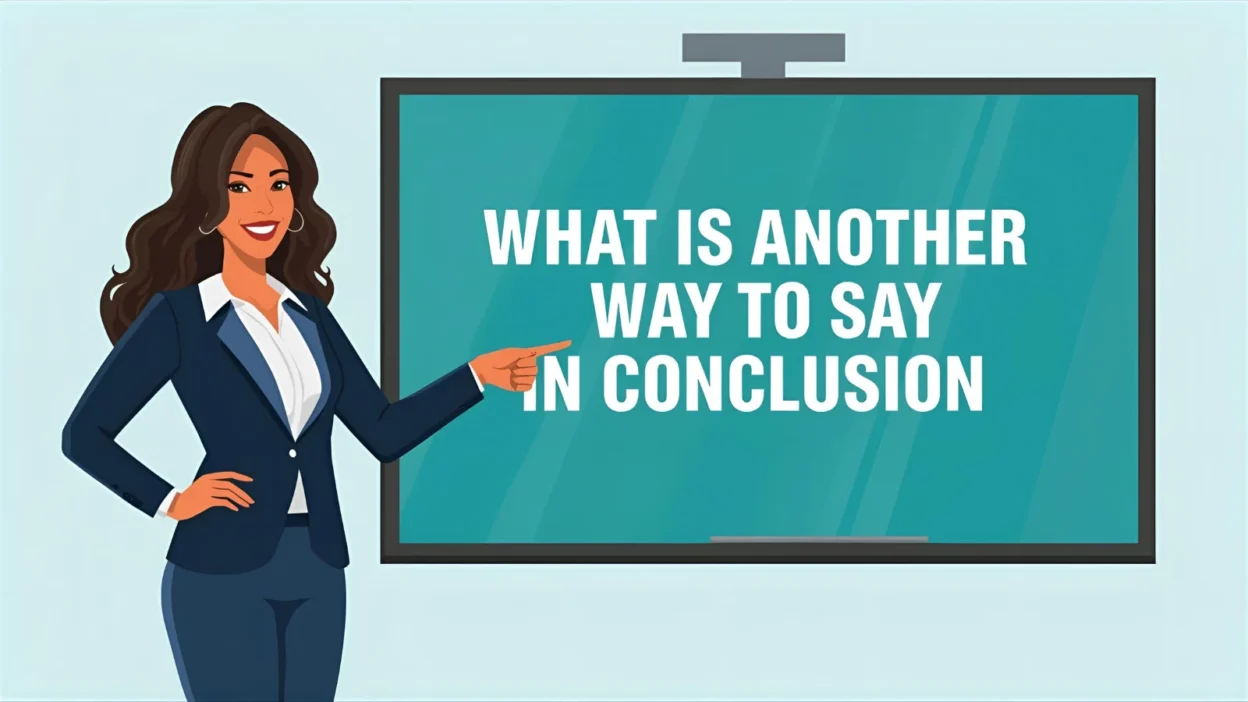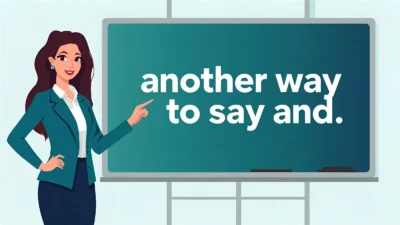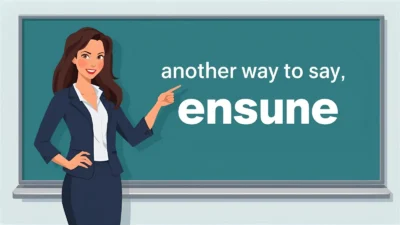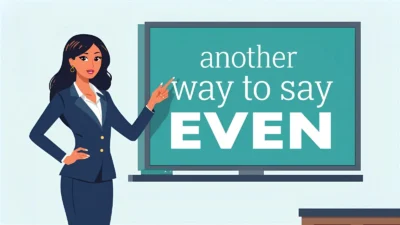The phrase “in conclusion” is a staple in essays, reports, presentations, and formal writing. It effectively signals that you’re summarizing your key points or final thoughts. However, overusing it—or relying on it in every closing paragraph—can make your writing feel repetitive or overly formulaic.
By using different alternatives, you can adjust the tone, flow, and formality of your ending while maintaining clarity and professionalism.
In this article, you’ll find 37 refined and versatile alternatives to “in conclusion,” complete with their meanings, explanations, examples, best contexts, and tone guides.
1. To Sum Up
Meaning: A brief way to introduce a summary or closing idea.
Detailed Explanation: Perfect for both writing and speech, it’s short and to the point without sounding too formal.
Scenario Example: To sum up, our team exceeded all quarterly goals.
Best Use: Presentations, reports, general writing.
Tone: Neutral, concise, polished.
2. To Conclude
Meaning: A direct way to signal final thoughts.
Detailed Explanation: Slightly formal and clear, it’s often used in essays and academic writing.
Scenario Example: To conclude, this study demonstrates the value of teamwork in innovation.
Best Use: Academic or professional writing.
Tone: Formal, clear, structured.
3. In Summary
Meaning: Indicates a brief restatement of key points.
Detailed Explanation: Ideal for providing a concise overview or highlighting main findings.
Scenario Example: In summary, effective communication leads to stronger collaboration.
Best Use: Reports, essays, research papers.
Tone: Professional, neutral, informative.
4. Overall
Meaning: Offers a general evaluation or final perspective.
Detailed Explanation: Smoothly ties together all ideas and provides a closing observation.
Scenario Example: Overall, the project achieved its objectives ahead of schedule.
Best Use: Business writing, summaries, discussions.
Tone: Balanced, professional, clear.
5. All in All
Meaning: Wraps up the discussion by considering everything mentioned.
Detailed Explanation: Slightly conversational, but still acceptable in semi-formal writing.
Scenario Example: All in all, it was a successful and productive year.
Best Use: Presentations, conversational writing, reflections.
Tone: Friendly, conclusive, natural.
6. To Wrap Up
Meaning: A casual phrase to close or summarize.
Detailed Explanation: Great for spoken communication, especially when addressing audiences.
Scenario Example: To wrap up, let’s remember our main priorities for next quarter.
Best Use: Speeches, meetings, presentations.
Tone: Conversational, engaging, relaxed.
7. In Closing
Meaning: Marks the final statement in a formal or ceremonial context.
Detailed Explanation: Often used in speeches or letters to indicate a polished conclusion.
Scenario Example: In closing, I’d like to thank everyone for their hard work.
Best Use: Speeches, letters, presentations.
Tone: Formal, respectful, composed.
8. To Bring It All Together
Meaning: Combines multiple points into a unified summary.
Detailed Explanation: Emphasizes the synthesis of ideas rather than just a summary.
Scenario Example: To bring it all together, collaboration is key to lasting success.
Best Use: Reports, presentations, reflective writing.
Tone: Thoughtful, integrative, professional.
9. In Brief
Meaning: Indicates a short, concise summary.
Detailed Explanation: Useful when summarizing complex ideas quickly and efficiently.
Scenario Example: In brief, our findings support continued investment in research.
Best Use: Reports, abstracts, analytical writing.
Tone: Professional, succinct, formal.
10. In Short
Meaning: Provides a concise conclusion or final remark.
Detailed Explanation: Similar to “in brief,” but slightly more conversational.
Scenario Example: In short, preparation was the key to our success.
Best Use: Conversations, informal reports, essays.
Tone: Clear, conversational, straightforward.
11. To Recap
Meaning: Restates the main ideas quickly.
Detailed Explanation: Ideal for oral communication and business meetings.
Scenario Example: To recap, we’ve covered the challenges, solutions, and next steps.
Best Use: Presentations, meetings, summaries.
Tone: Friendly, concise, practical.
12. Finally
Meaning: Signals the last point or closing statement.
Detailed Explanation: Simple and widely used; good for both written and spoken contexts.
Scenario Example: Finally, we must prioritize sustainability moving forward.
Best Use: Essays, presentations, discussions.
Tone: Neutral, clear, structured.
13. As a Final Point
Meaning: Introduces the last idea before closing.
Detailed Explanation: Adds emphasis to your concluding thought while maintaining formality.
Scenario Example: As a final point, transparency strengthens trust.
Best Use: Essays, speeches, reports.
Tone: Formal, composed, professional.
14. To Put It Simply
Meaning: Concludes with a clear and simplified summary.
Detailed Explanation: Great for distilling complex arguments into an easy takeaway.
Scenario Example: To put it simply, innovation drives progress.
Best Use: Explanations, presentations, writing for clarity.
Tone: Friendly, approachable, clear.
15. On the Whole
Meaning: Expresses a general or overall conclusion.
Detailed Explanation: Useful for summarizing collective findings or balanced views.
Scenario Example: On the whole, the project was a great success despite early challenges.
Best Use: Reports, essays, analyses.
Tone: Formal, analytical, neutral.
16. Taking Everything Into Account
Meaning: Considers all aspects before finalizing a conclusion.
Detailed Explanation: Suggests a careful and reasoned closing statement.
Scenario Example: Taking everything into account, we met our key objectives.
Best Use: Professional reports, formal summaries.
Tone: Reflective, balanced, formal.
17. All Things Considered
Meaning: Acknowledges all factors before summarizing.
Detailed Explanation: Similar to “taking everything into account,” but slightly more conversational.
Scenario Example: All things considered, the event was a success.
Best Use: Presentations, reflective writing.
Tone: Neutral, natural, thoughtful.
18. To Summarize
Meaning: Restates the main ideas briefly before ending.
Detailed Explanation: A direct and professional alternative widely used in writing.
Scenario Example: To summarize, our strategy focuses on quality and customer experience.
Best Use: Reports, essays, formal communication.
Tone: Professional, neutral, informative.
19. Ultimately
Meaning: Introduces a final judgment or outcome.
Detailed Explanation: Strongly emphasizes the result or main takeaway.
Scenario Example: Ultimately, our success depends on adaptability.
Best Use: Analytical writing, persuasive essays, conclusions.
Tone: Assertive, formal, impactful.
20. As We’ve Seen
Meaning: Refers back to earlier points before closing.
Detailed Explanation: Reinforces evidence-based reasoning.
Scenario Example: As we’ve seen, teamwork greatly enhances performance.
Best Use: Academic writing, research summaries.
Tone: Formal, cohesive, structured.
21. In Essence
Meaning: Captures the core idea or fundamental point.
Detailed Explanation: Ideal for summarizing the heart of your argument succinctly.
Scenario Example: In essence, innovation remains our greatest asset.
Best Use: Analytical, reflective, or persuasive writing.
Tone: Elegant, intellectual, concise.
22. In a Nutshell
Meaning: A very short summary of a longer explanation.
Detailed Explanation: Works well in casual speech or writing for clarity.
Scenario Example: In a nutshell, our campaign was a huge success.
Best Use: Conversations, informal writing, summaries.
Tone: Casual, light, approachable.
23. To Close
Meaning: Marks the ending of a discussion or presentation.
Detailed Explanation: Friendly and effective in both written and spoken communication.
Scenario Example: To close, I’d like to emphasize the importance of teamwork.
Best Use: Presentations, speeches, meetings.
Tone: Neutral, courteous, direct.
24. To Finish Off
Meaning: A casual, engaging way to conclude a topic.
Detailed Explanation: Creates a friendly and conversational closing tone.
Scenario Example: To finish off, let’s thank everyone for their contributions.
Best Use: Team meetings, casual presentations.
Tone: Friendly, relaxed, informal.
25. The Bottom Line Is
Meaning: Introduces the key takeaway or final judgment.
Detailed Explanation: Great for persuasive or results-oriented conclusions.
Scenario Example: The bottom line is that preparation determines success.
Best Use: Business communication, persuasive writing.
Tone: Confident, professional, assertive.
Conclusion
While “in conclusion” is clear and correct, diversifying your closing phrases helps you adapt to the tone and formality of each context. Whether you need a formal close (“to conclude,” “in summary”), a neutral summary (“overall,” “to sum up”), or a friendly wrap-up (“all in all,” “to wrap up”), choosing the right phrase strengthens your communication.
By matching your conclusion phrase to your purpose, you make your writing sound more natural, polished, and professional—while leaving a strong final impression.



